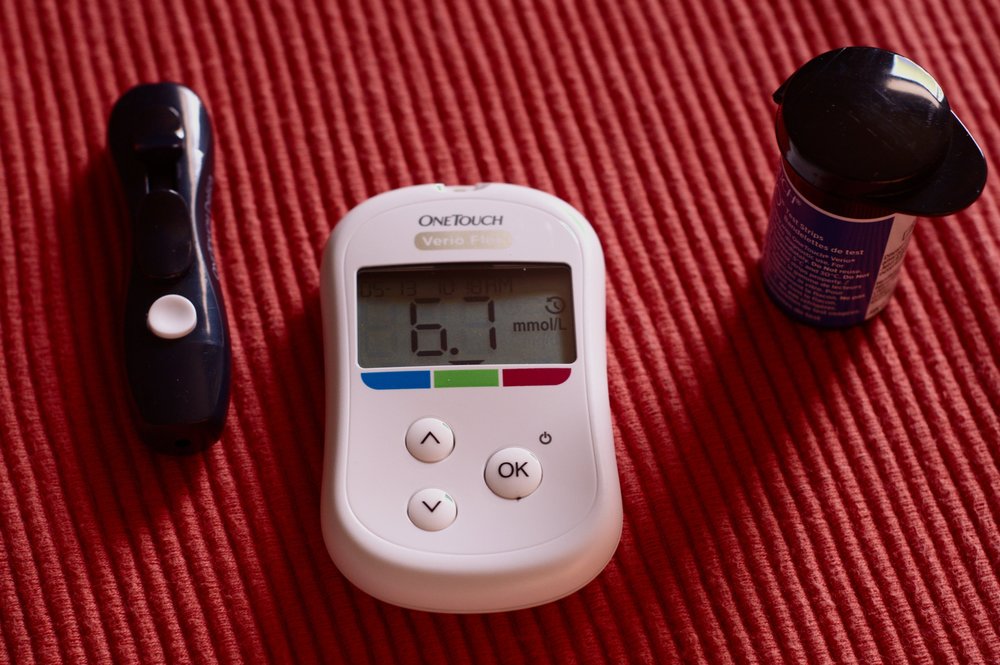National Diabetes Week runs from 8 July to 14 July. This years’ campaign; “It’s About Time” aims to raise awareness about the importance of early detection and early treatment for all types of diabetes. Too many Australians are being diagnosed with diabetes too late. This is true for both type 1 diabetes and type 2 diabetes. The delay in diagnosis is putting many people at risk of major life-threatening health problems.
“It’s About Time” we detected all types of diabetes earlier and save lives.
Diabetes Mellitus (DM) is a group of metabolic diseases characterised by an elevated blood glucose concentration (hyperglycaemia) as a result of defects in insulin secretion and/or inability to use insulin. Put simply:
Type 1 Diabetes is when a lack of insulin production by the pancreas because cells that are required to produce insulin (Beta cells) are destroyed by the immune system.
Type 2 Diabetes is a chronic disease marked by high levels of blood sugar (hyperglycaemia). It occurs when the body does not stimulate insulin for glucose (blood sugar) uptake (insulin resistance).
Gestational Diabetes Mellitus refers to any degree of glucose intolerance during pregnancy.
In accordance with this years’ theme; ‘It’s About Time’, early detection of blood glucose levels is vital, in order for you know if you are at risk. Some risk factors for diabetes include:
- Age
- Family history
- Smoking and Alcohol patterns
- Excessive or poor dietary intake
- Physical inactivity levels
- Overweight and obesity
- Blood glucose test results/Hba1c level
The GP will assess all factors and complete tests before a formal diagnosis is made. They must be the first point of contact.
Exercise has long been recognised as a vital component of diabetes care and is also now recognised and considered as an important component in the prevention, even delay of type II diabetes.

Benefits of exercise on glucose control include:
- Reduces blood glucose concentration as more glucose is being taken into cells rather than remaining in the blood
- Improvements in body composition and cardiorespiratory fitness
- Reduction in cardiovascular risk event
Exercise Precautions help establish safe parameters for the session. Precautions include but are not limited to the following:
- The best time to exercise is approximately one hour after a meal.
- Peripheral neuropathy reduces sensations in the limbs of people with type two diabetes, exposing people with this condition to a reduced awareness of painful sores that can result in ulcerations. Appropriate footwear regular foot checks and low impact activity are highly advised to minimise exacerbations due to peripheral neuropathy.
- The occurrence of hypoglycaemia is relatively low. But the risk is greater for those with poorly controlled diabetes and those with longer history of diabetes. Prevention of hypoglycaemia centres around self-monitoring of blood glucose levels and consultation of your GP.
- Before and after any exercise session, blood glucose levels should be monitored to determine whether the individual is safely able to commence exercise. An exercise physiologist is best able to consider the length and intensity of the session based on blood glucose results on the day. From this they can determine whether carbohydrate intake is necessary before commencing exercise or a ‘top up’ in carbohydrates is required after a session.
 Before commencing any exercise program, an Accredited Exercise Physiologist is well equipped to tailor your interests, goals, type of diabetes, medications use, as well as presentation and severity of diabetes complications into an individualised exercise program. We establish a safe and specific intervention; whether the focus is on cardiovascular/ aerobic exercise and/or strength/ resistance training.
Before commencing any exercise program, an Accredited Exercise Physiologist is well equipped to tailor your interests, goals, type of diabetes, medications use, as well as presentation and severity of diabetes complications into an individualised exercise program. We establish a safe and specific intervention; whether the focus is on cardiovascular/ aerobic exercise and/or strength/ resistance training.
Benefits of a balanced diet on glucose control
When it comes to your diet, healthy eating for diabetes is no different from everyone else! Enjoying a balanced diet is an essential part of diabetes management and it can help control your blood sugar levels, achieve a healthy body weight, prevent or slow the development of complications as well as promote general good health. Be sure to;
- Eat regular balanced meals, spread evenly throughout the day
- Include a wide-variety of foods from all five food groups (you don’t need to eliminate carbs or sugar from your diet!)
- Choose quality sources of carbohydrates that are high in fibre such as wholegrain bread and cereals, beans & lentils. You may also need to consider the timing and amount if you are using insulin
- Limit foods high in saturated fats, added sugars and salt (think fried food and pastries)
While research has shown that some dietary patterns, such as low GI or Mediterranean diet, may assist in the management of your diabetes, it is important to remember not one size fits all! For personal advice, ensure you get support from an Accredited Practising Dietitian.
 Written by Active Ability Dietitian Bec Lancaster
Written by Active Ability Dietitian Bec Lancaster